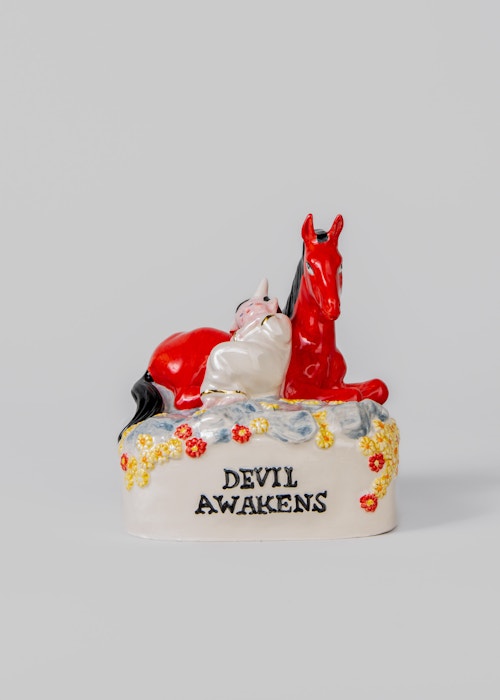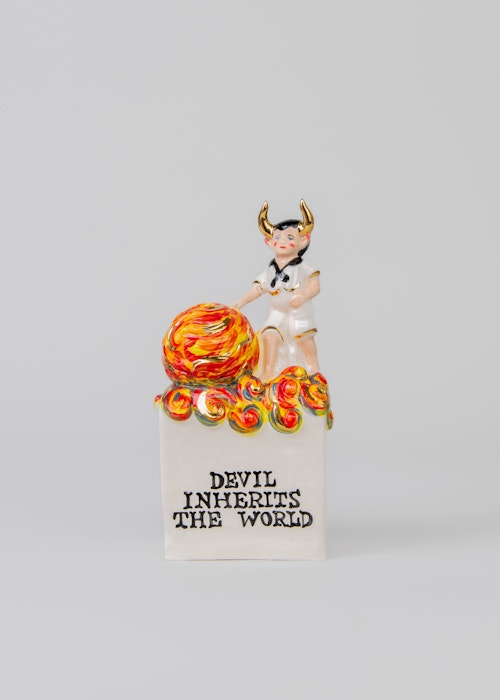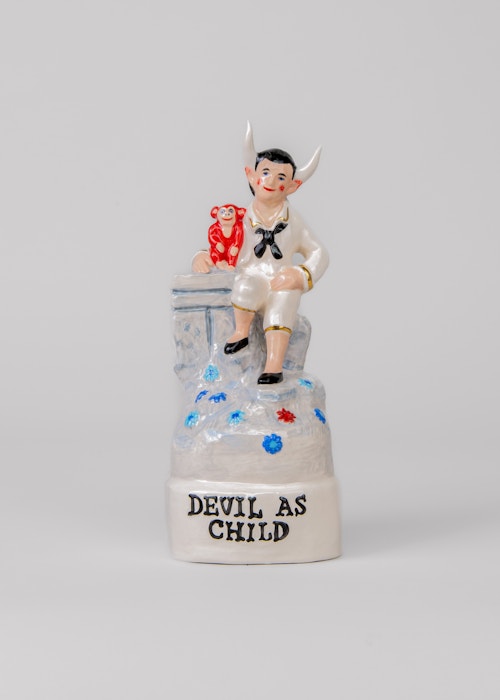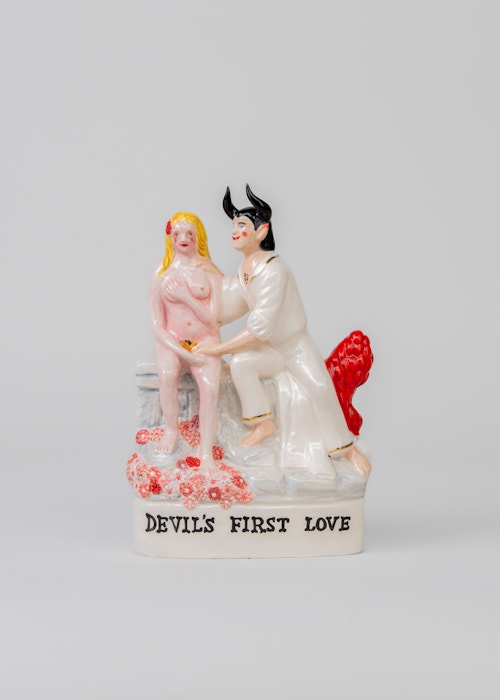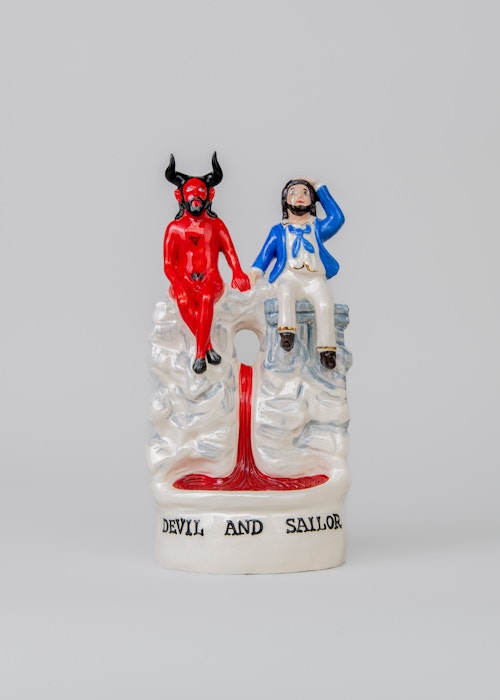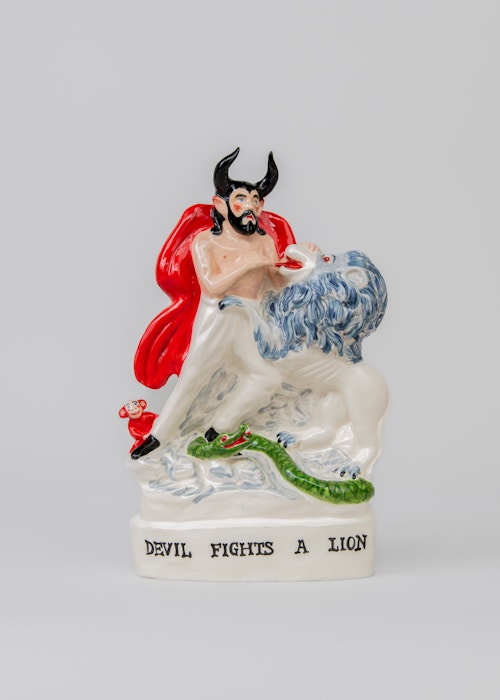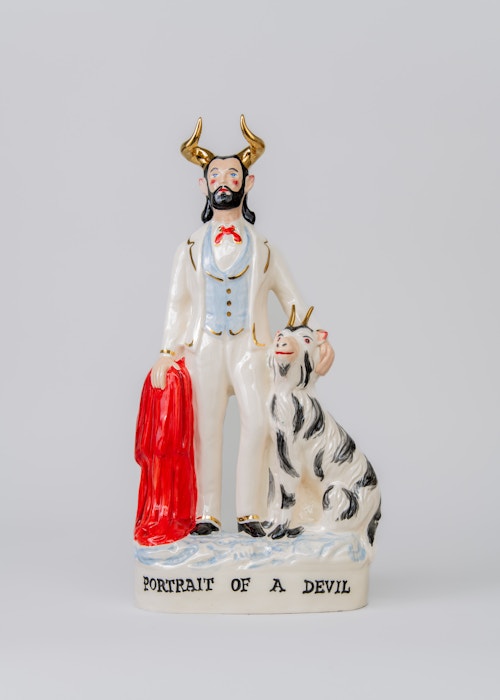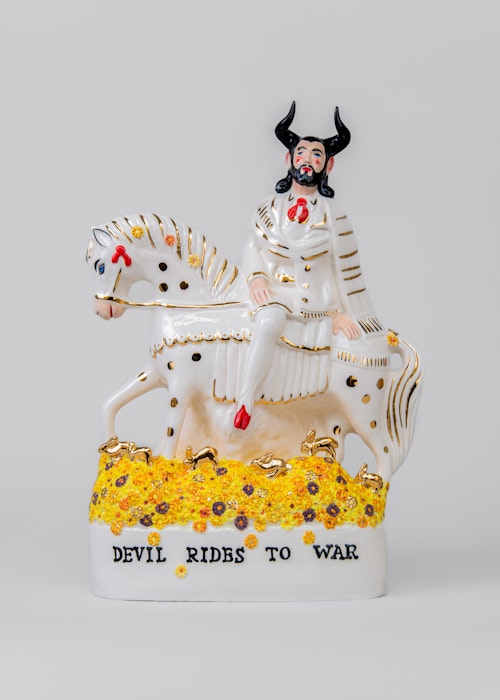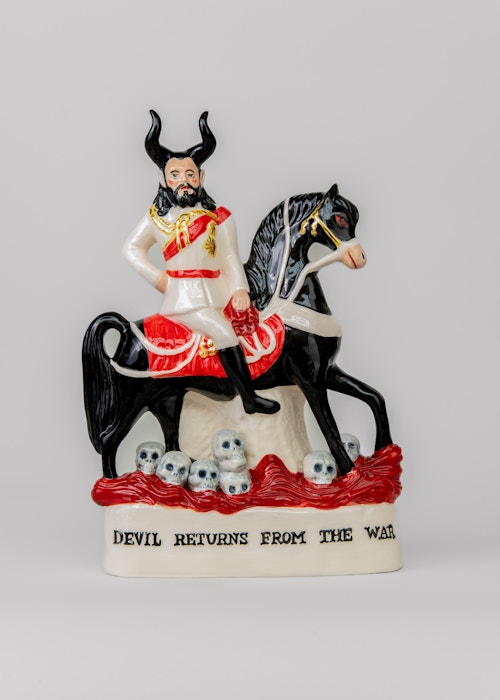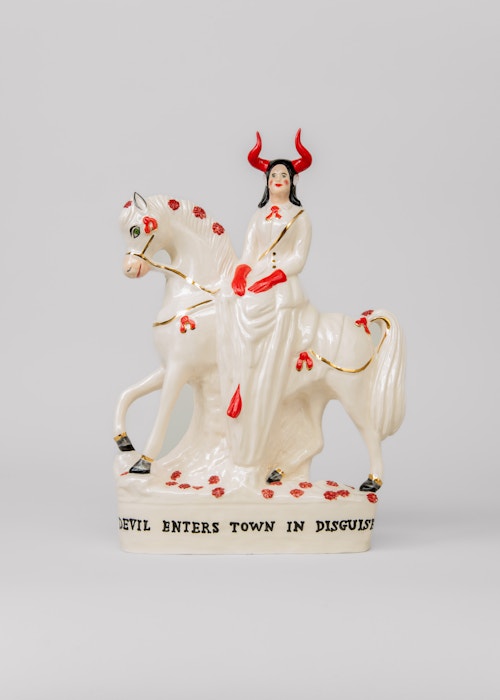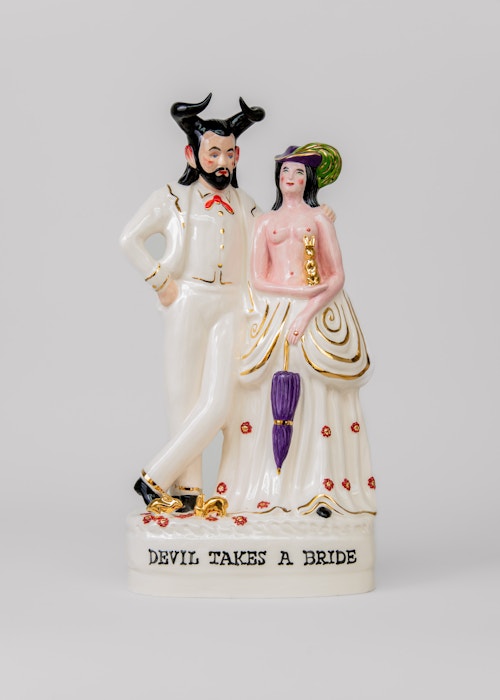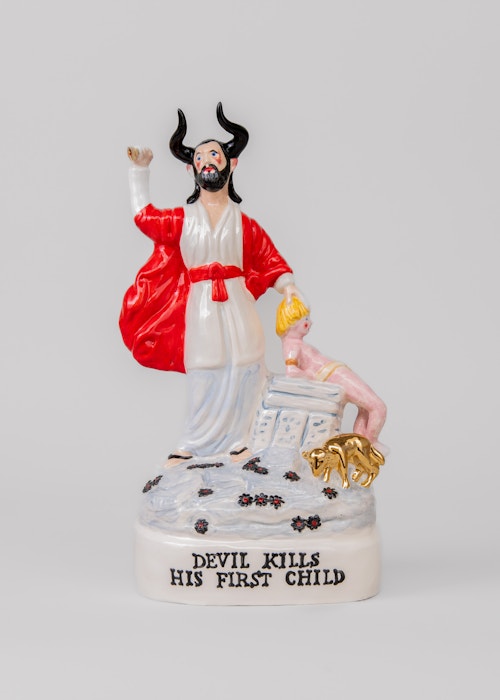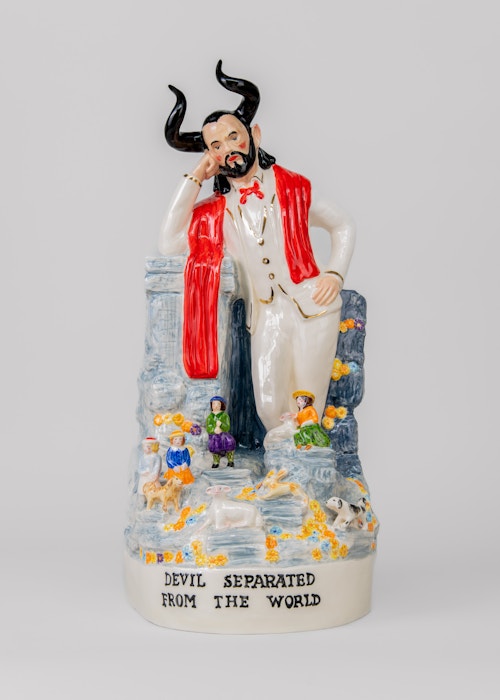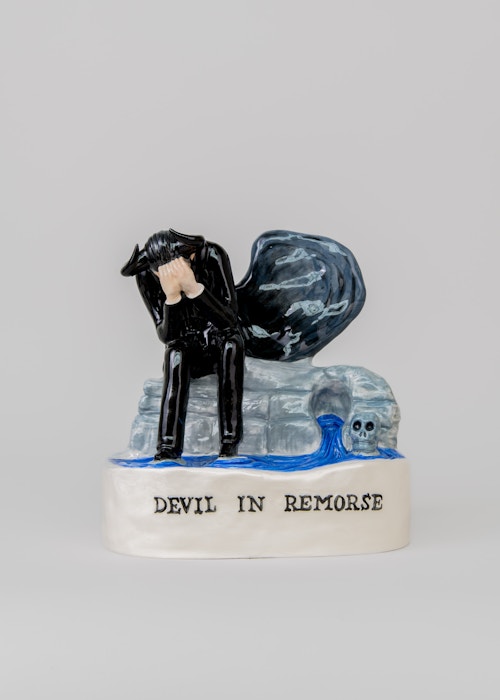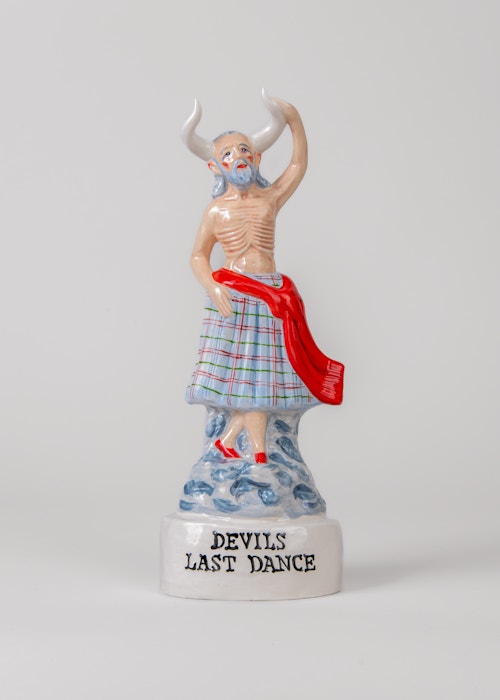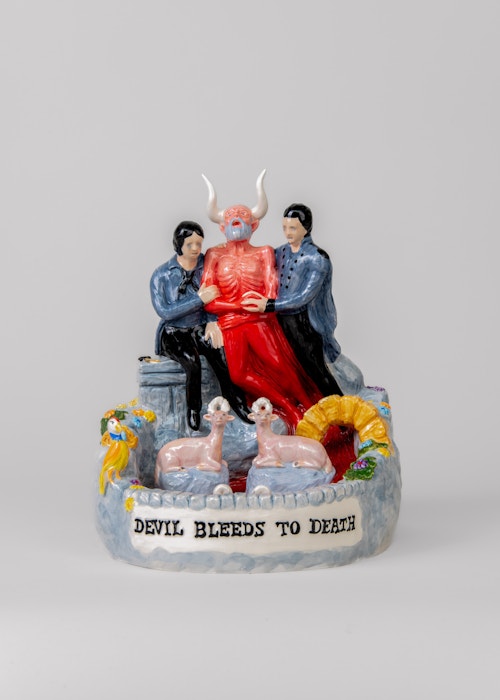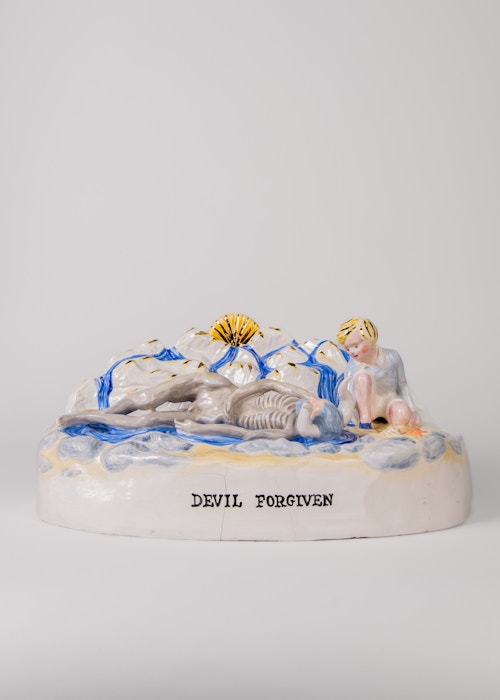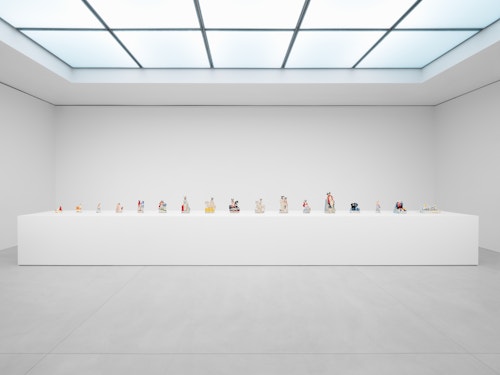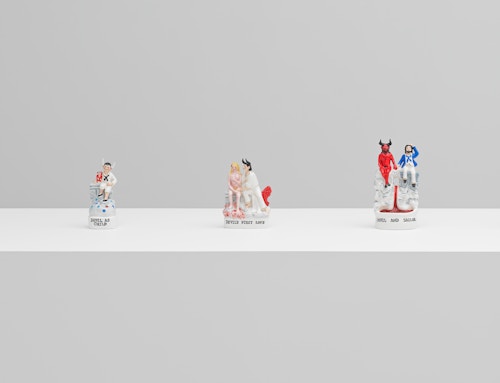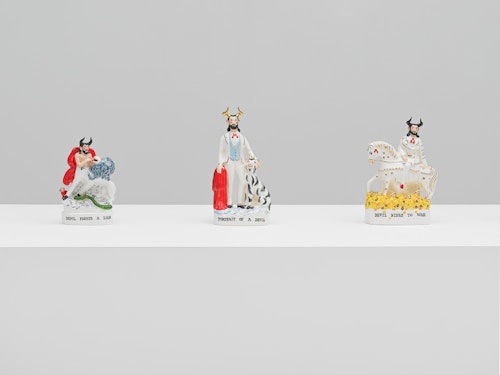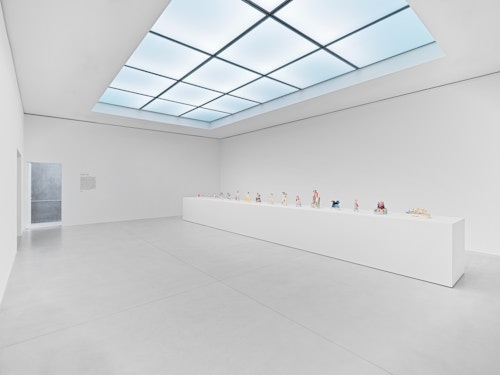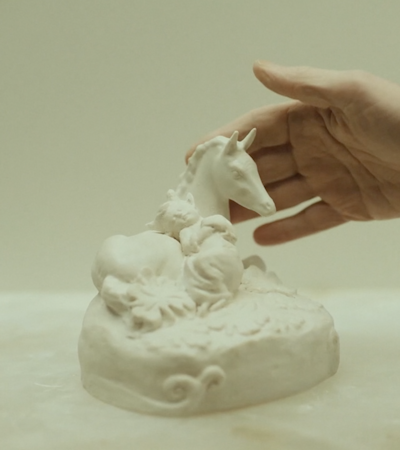
Nick Cave The Devil — A Life
The Devil — A Life (2020-24) by Nick Cave is a series of seventeen glazed ceramic figurines that tells the cradle-to-grave story of the Devil. More everyman than fearsome Antichrist, he is an allegorical character who experiences the vicissitudes of life in a very human way. Presented in Belgium for the first time, this narrative work is a visual expression of the artist’s abiding interest in religion as a catalyst for a deeper and more creative approach to life.
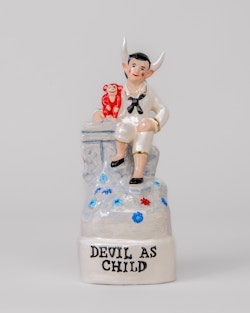
In Cave’s series, the young Devil inherits the world, grows up and falls in love. He is brave, fights a lion and rides off to war. He kills his firstborn son, is shunned for his transgressions and turns into a shell of his former self. Ultimately, he suffers an abject death before achieving, in the final work, a child’s posthumous forgiveness. It is a trajectory that evokes Shakespeare’s Seven Ages of Man from As You Like it, through which the playwright classified the roles we are assigned in life: infant, schoolchild, lover, soldier, judge, dotage and decrepitude. Like a parable, The Devil — A Life chronicles a process of mental and physical transformation, namely the transition from innocence to experience. The changing nature of the Devil’s horns and physique marks the passage of time. Cave’s protagonist is a complex figure whose interactions with the world are open to interpretation. Lust and love, bravery and vanity, deception, sin and sacrifice, remorse and sorrow are just some of the themes that come to the fore. Symbols abound, such as red, black and white horses (the colours of the three steeds ridden by Horsemen of the Apocalypse), a monkey, dog and snake, rabbits and skulls.
Nick Cave’s interest in the Devil is linked to his engagement with religion and spirituality, which he approaches with a mix of scepticism and belief. He views these antithetical sentiments as analogous to the artistic struggle, which is akin to a quest for something that transcends the realms of pure rationality. The Devil — A Life is a form of pictorial storytelling that questions how we interpret the human condition. In the figure of the Devil, Cave sees a flawed individual — an embodiment of the darker, irrational aspects of the human psyche — who nevertheless aspires to betterment. In other words, people are conflicted, and there is good and bad in everyone.
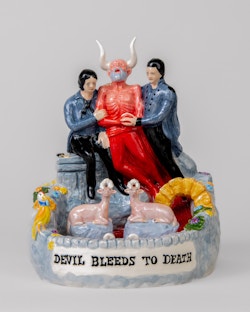
In Western culture, the Devil is an archetype that is lodged in the collective consciousness, whether through scripture, literature, art or folklore. Is he the personification of evil, a horned figure with cloven hooves, a fallen angel or, as in Cave’s series, someone who looks just like us? From the Bible to Dante’s Inferno and Milton’s Paradise Lost, and from William Blake to Christopher Marlowe’s Doctor Faustus, the Devil has long been a prism through which to consider notions of good and evil, liberation and damnation. For Blake, the Devil was a symbol of energy, passion and creative freedom. That Cave identifies with his protagonist is borne out by Devil In Remorse, which is a self-portrait of the artist in his signature black suit. He has said of this deeply personal series: “What started as a desire to create a single small devil figure as a vehicle for an intense red glaze became a journey towards some kind of absolution from a series of shattering events. This [the ceramic works] — and in fact, all the songs that I write — are about the idea of forgiveness, the idea that there is a moral virtue in beauty. It’s a kind of balancing of our sins.”
The Devil — A Life is created in the style of Victorian Staffordshire flatback figurines, which were produced in small factories in England between 1837 and 1900, often by children. Although they date back to the 1740s, the Victorian models were largely designed to stand on a shelf or mantlepiece and, as result, were only modelled and decorated on the fronts and sides — hence the name ‘flatbacks’. Staffordshire figurines depict all manner of subjects and, while cheap in their time, they are now very desirable items.
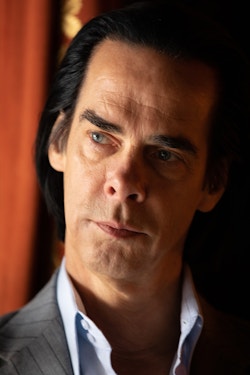
Nick Cave (b. 1957, Victoria, Australia) is a singer, songwriter, poet, lyricist, author, screenwriter and composer. Born in Warracknabeal in rural Victoria, he was drawn to the arts from an early age. Cave studied painting at the Caulfield Institute of Technology (Monash University, Melbourne) in 1976 before abandoning his studies to pursue music, relocating to Berlin and London in the 1980s. He rose to prominence fronting The Birthday Party (1973-83) before forming his current band, Nick Cave and The Bad Seeds, in 1984. Cave’s first major body of visual work, The Devil — A Life (2020-24), was born out of his recent interest in ceramics and was shown in the exhibition We at the Sara Hildén Art Museum in Finland (2022-23), together with work by Thomas Houseago and Brad Pitt.

